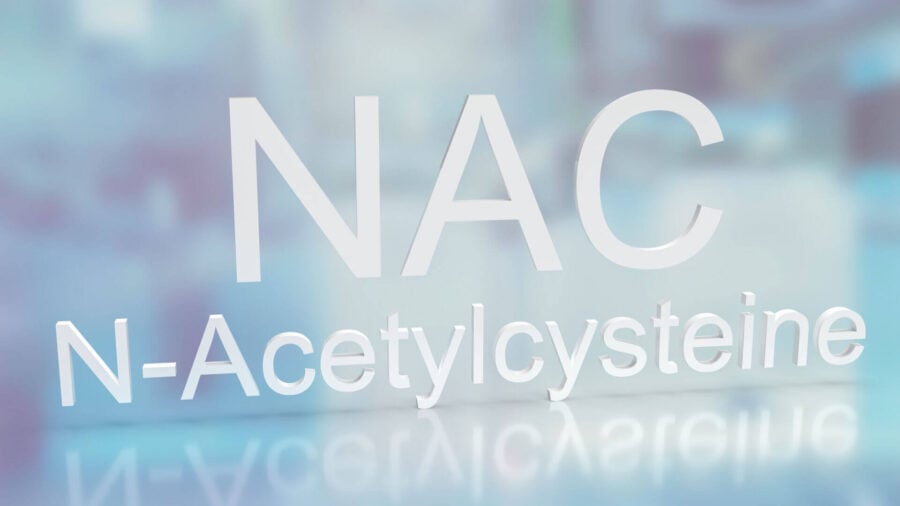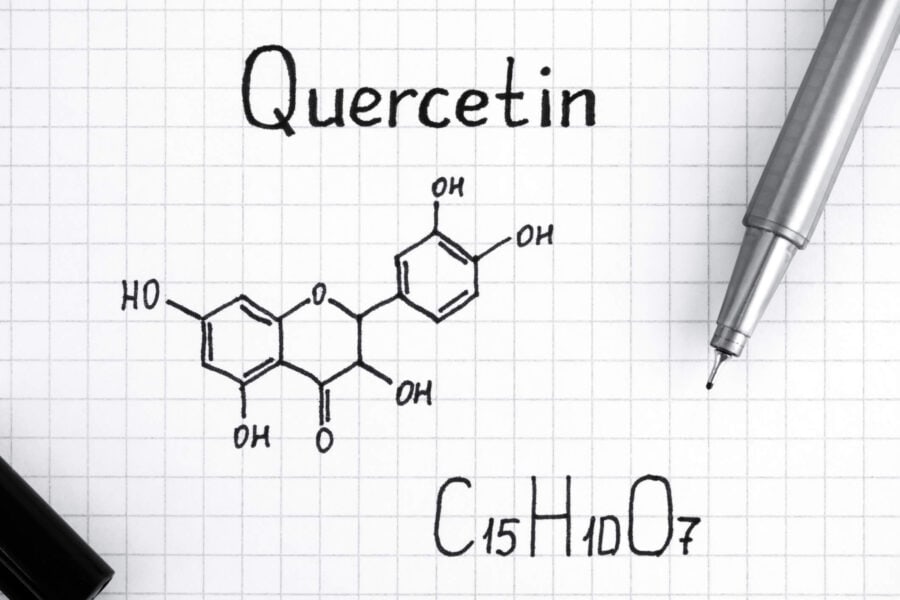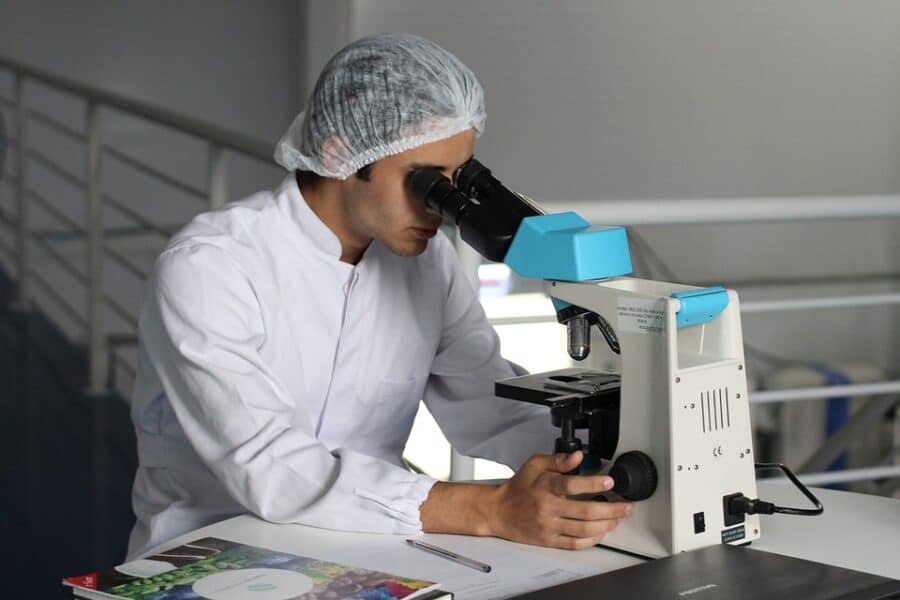The differences between NMN & NR

Nicotinamide mononucleotide (NMN) and nicotinamide riboside (NR) are precursors to nicotinamide adenine dinucleotide (NAD+) – a vital molecule for metabolism. Scientific research indicates that the body’s NAD+ levels decrease as we age, with restoration of NAD+ levels in aged animals promoting health and extending lifespan. Research on both precursors indicates supplementing the body with either increases bodily NAD+ levels throughout the ageing process.
With this in mind, what are the key differences between NMN and NR?
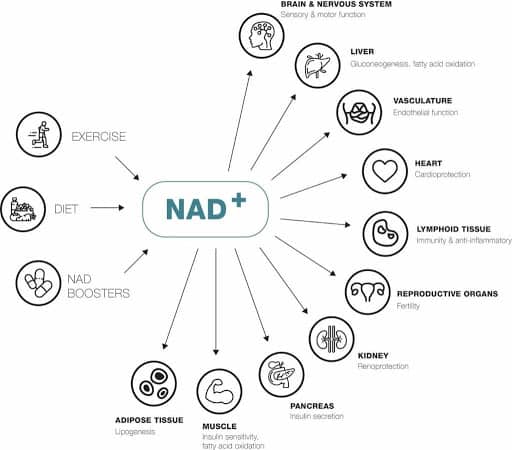
The key differences between NMN and NR involve the precursors’ molecular structures and how cells biosynthesize the precursors to NAD+.
The main differences between NMN & NR
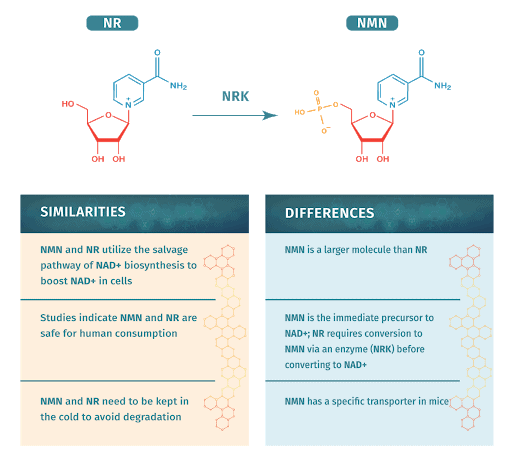
NMN and NR contain a similar molecular structure. However, NMN has an added phosphate group. This added group makes it a bigger molecule than NR, and some scientists have suggested that NMN is too big a molecule to cross cellular membranes. Therefore, the theories suggest it would have to convert to NR before entering cells (where NAD+ biosynthesis happens). Otherwise, NMN would need a specific transporter, such as Slc12a8, to be transported into cells.
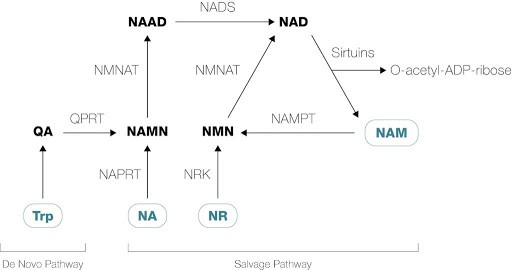
How NMN & NR convert to NAD+ in cells
Once it enters the cells, NR converts to NMN through enzymes called “NRKs”. After NMN has undergone the process of synthesizing, the molecules enter the “nicotinamide core recycling pathway”. In this pathway, the enzyme, NMNAT, converts NMN to the NAD+ molecule. “Sirtuins”, a protein, then use NAD+ to turn it into nicotinamide (NAM). Here they work to regulate cellular health. NAM then uses the enzyme NAMPT to convert to NMN.
Typical diets contain B3 vitamins including nicotinamide riboside (NR), nicotinic acid (NA) and nicotinamide (NAM). NAD+ becomes synthesized from tryptophan or these b3 vitamins from the diet. Humans are incapable of synthesizing NAD+ without the use of tryptophan, NMN supplements or B3 vitamins.
A 2007 study indicates that NR dramatically increases NAD+ levels in yeast. Further research indicates that NR enhances NAD+ production in mammalian cells by up to 270%. This research indicates that there is a specified role for the salvage pathway of NAD+ biosynthesis involving NMN and NR in enhancing bodily NAD+ levels. It is unclear as to what is the exact mechanism for this to happen.
Debate continues regarding which of the two biosynthetic precursors, NR or NMN, is greater regarding efficacy and safety. Some scientists believe that NMN has to convert to NR before entering the cells. After entering the cells NR would then become NMN. If this turns out to be true, the more superior precursor would be NR.
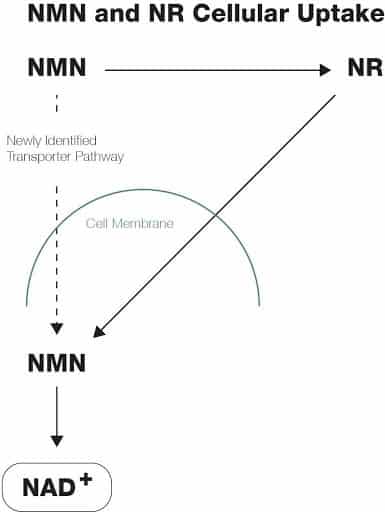
A research team from Washington University School of Medicine recently provided fascinating evidence for the existence of Slc12a8, a specific NMN transporter in the gut of mice. A transporter is a particular protein which facilitates the safe passage of a molecule across a cellular barrier, in this case being the cell membrane.
Genomics data, used to analyse full human gene sets, implies the gene encoding this transporter most likely exists within human bodies. What remains to be seen is whether the transporter is capable of the same expression in humans as it is in mice. This would allow NMN to transport across the cell membrane. According to a genomics database slc12a8 is expressed in humans and found within the colon, thyroid, testis, stomach and small intestine. Therefore, there is potential that this NMN transporter has a similar role in NMN absorption and is expressed similar in the human gut.
Confirming slc12a8 and its expression patterns in the human gut requires further studies. If research concludes a similar expression pattern between humans and mice, it will then be possible that NMN constitutes the more effective precursor as opposed to that of NR.
Given the solid results of both NMN and NR in boosting bodily NAD+ levels and their apparent roles as strong NAD+ precursors, what does research say about the efficacy and safety of such molecules? How is it stored to optimise efficacy?
Are NMN & NR safe?
Safety is always a main concern for supplement consumption. Current studies indicate there are no safety concerns for consuming both NMN and NR. Here we will discuss the safety of both NMN and NR consumption.
NMN safety
A Japanese study found no safety concerns resulted from a single oral administration of a 500 mg dose of NMN. Scientists in this NMN safety study found no changes in blood pressure, body temperature, oxygen saturation or heart rate. The researchers concluded that NMN metabolised effectively in healthy men without any adverse effects.
NR safety
Research also indicates that NR is safe for human consumption. A study in which overweight obese men were administered with NR found no adverse safety concerns over a 12-week period. The scientists administered 2000 mg daily to these men and women. They found the administering was safe, but that it did not insulin activity and whole-body glucose metabolism in the healthy obese men.
Given that research indicates the safety of both NMN and NR, how efficient are they? Researchers utilise “bioavailability” to indicate their effect. Bioavailability is a measure of how supplementing with NR and NMN increases blood levels of NAD+ and the molecules themselves.
Bioavailability of NR & NMN
Bioavailability regards the amount of a substance that runs through blood circulation once administered into the body and can have an active effect on the body. Indicators for NMN and NR bioavailability are the levels of either precursor in the blood after they have been administered. Researchers can also test NAD+ levels in the blood following administration of either NMN or NR.
NR has taken up the bulk of bioavailability research regarding NAD+ precursors. Only human studies exist regarding NR bioavailability as a precursor to NAD+. Research regarding NMN bioavailability has been undertaken on mice.
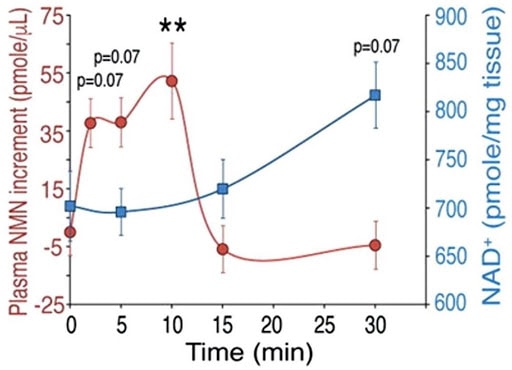
NMN bioavailability
A study on rodents concluded that blood plasma NMN levels greatly increase after taking NMN orally at 300 mg/kg. The highest NMN levels in blood plasma happen after 10 minutes after administration. NAD+ levels increase significantly after 30 minutes of NMN administration.
NR bioavailability
A research project concluded that NAD+ increases up to 2.7-fold after a single, oral dose of NR. This same research indicated a dose-dependent increase in blood nad+ levels. These were found over 100, 300 and 1000 mg NR doses.
Storing both NMN & NR
To begin taking either NMN or NR as a supplement, it is vital to know how to properly store it and whether it is stable. NR is stable for up to six hours at room temperature and seven days at 2-8 degrees Celsius. You should always keep your NMN and NR in a cold storage space, as keeping it in a cupboard in an unstabilised form will cause it to degrade to nicotinamide. Nicotinamide can, unfortunately, inhibit sirtuins as well as interfere with DNA repair, taking the opposite effect of well-kept, stabilised NMN and NR.
To summarise
Studies indicate that both NR and NMN consumptions can potentially enhance NAD+ levels in the human body. Researchers have conducted various human safety and bioavailability tests for NR. Researchers have also concluded bioavailability tests on rodents for NMN. Further research is required, however, to determine which is a more effective NAD+ precursor. Visit Eternum Labs shop if you’re looking to buy NMN supplements here.
